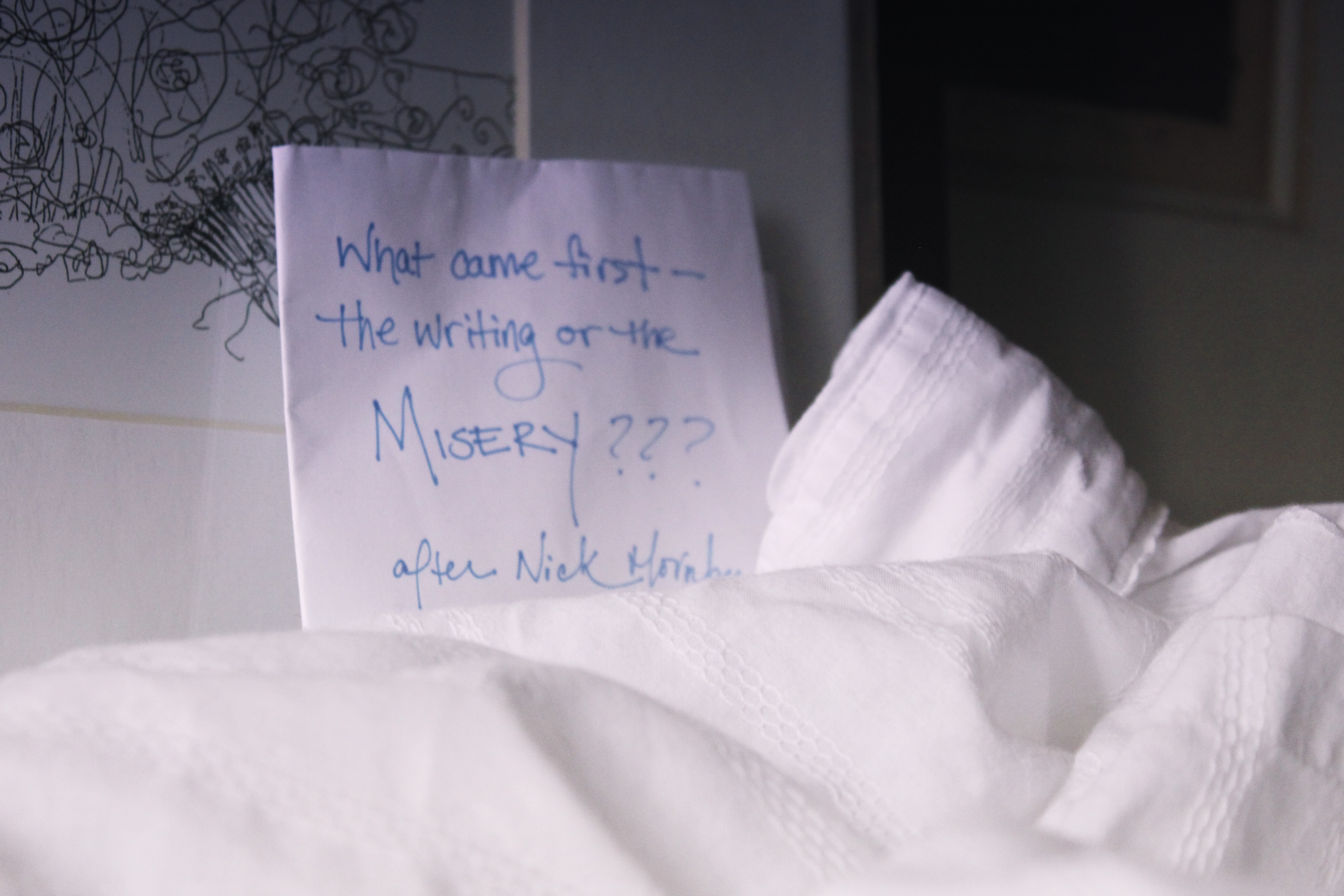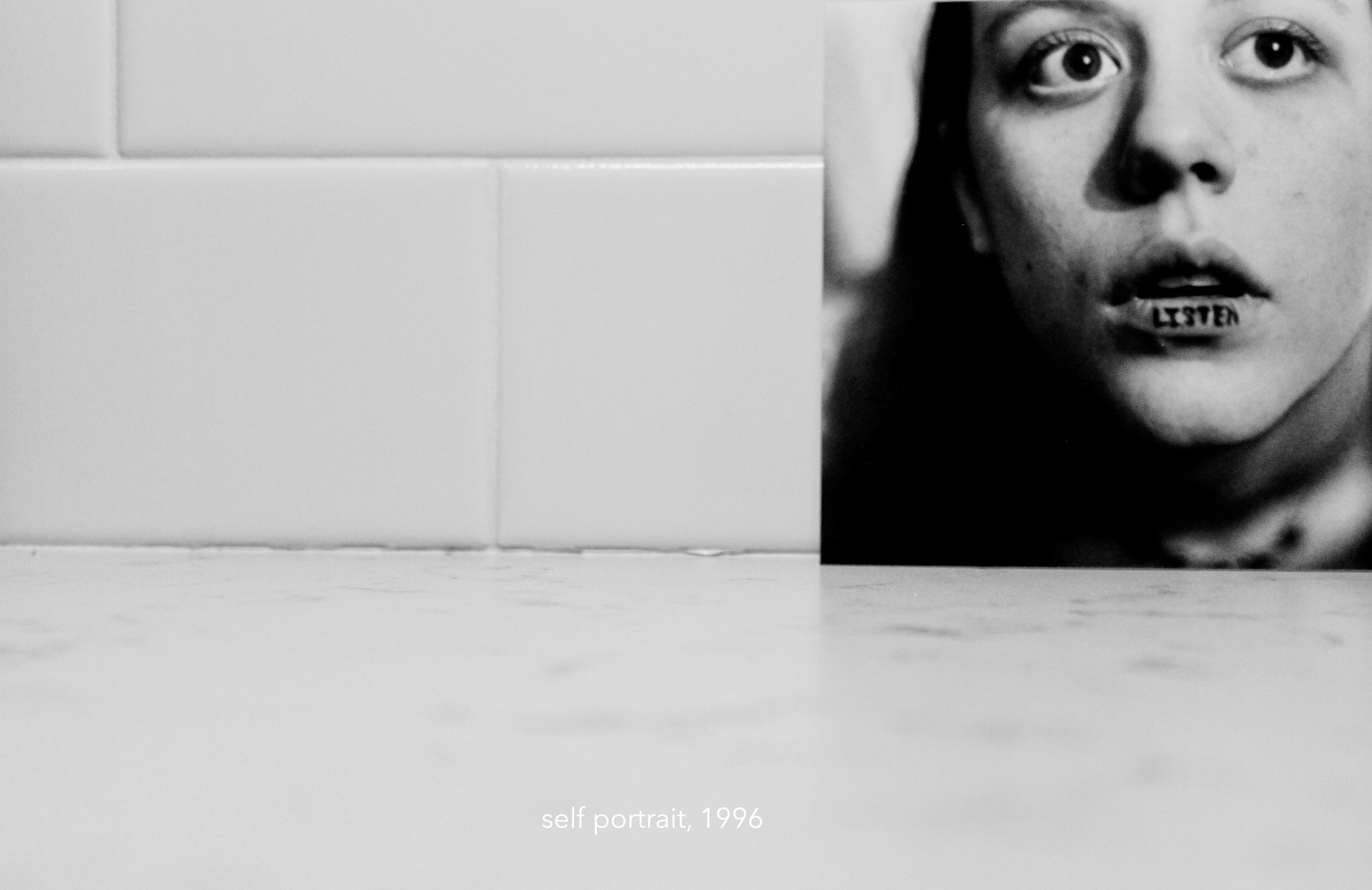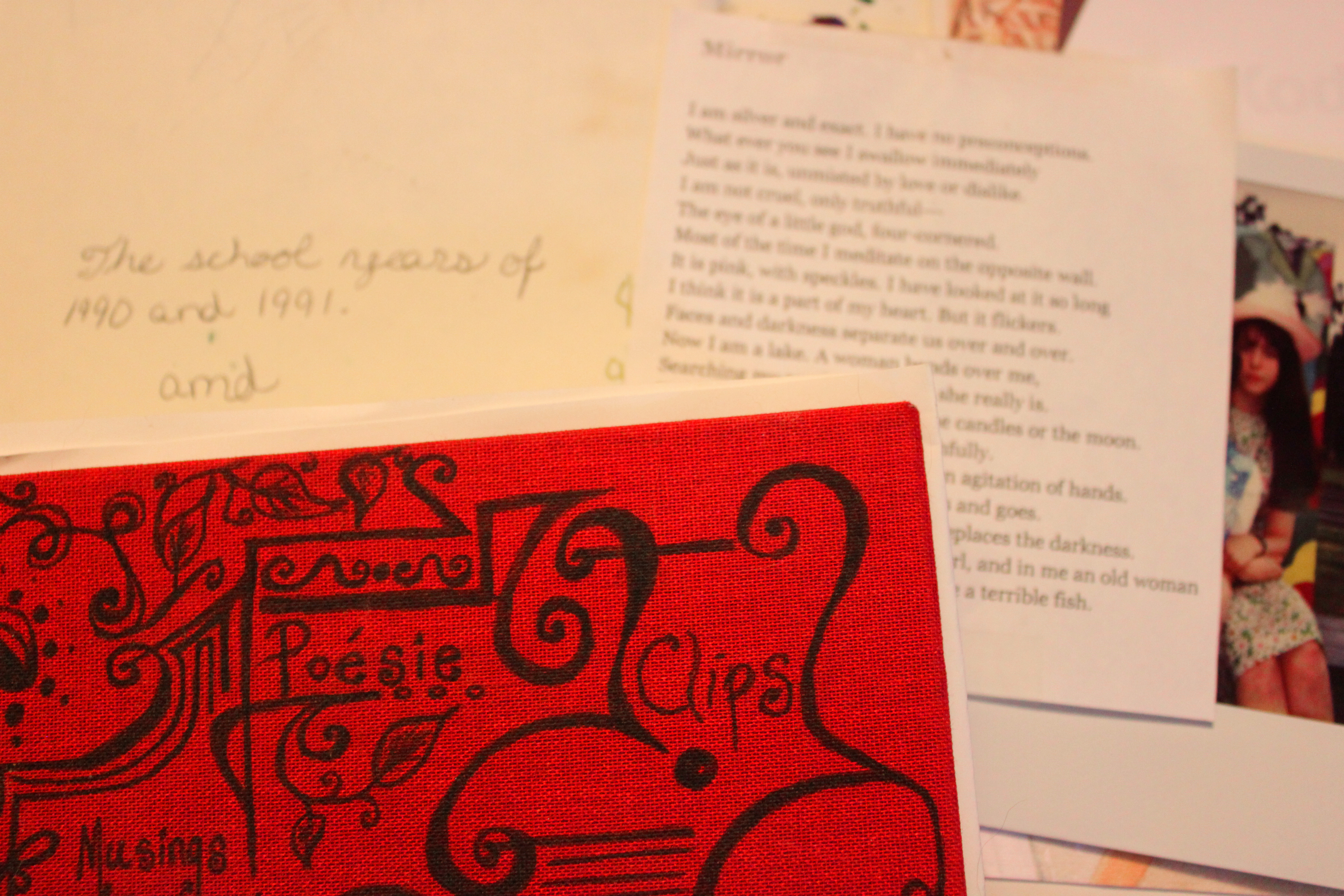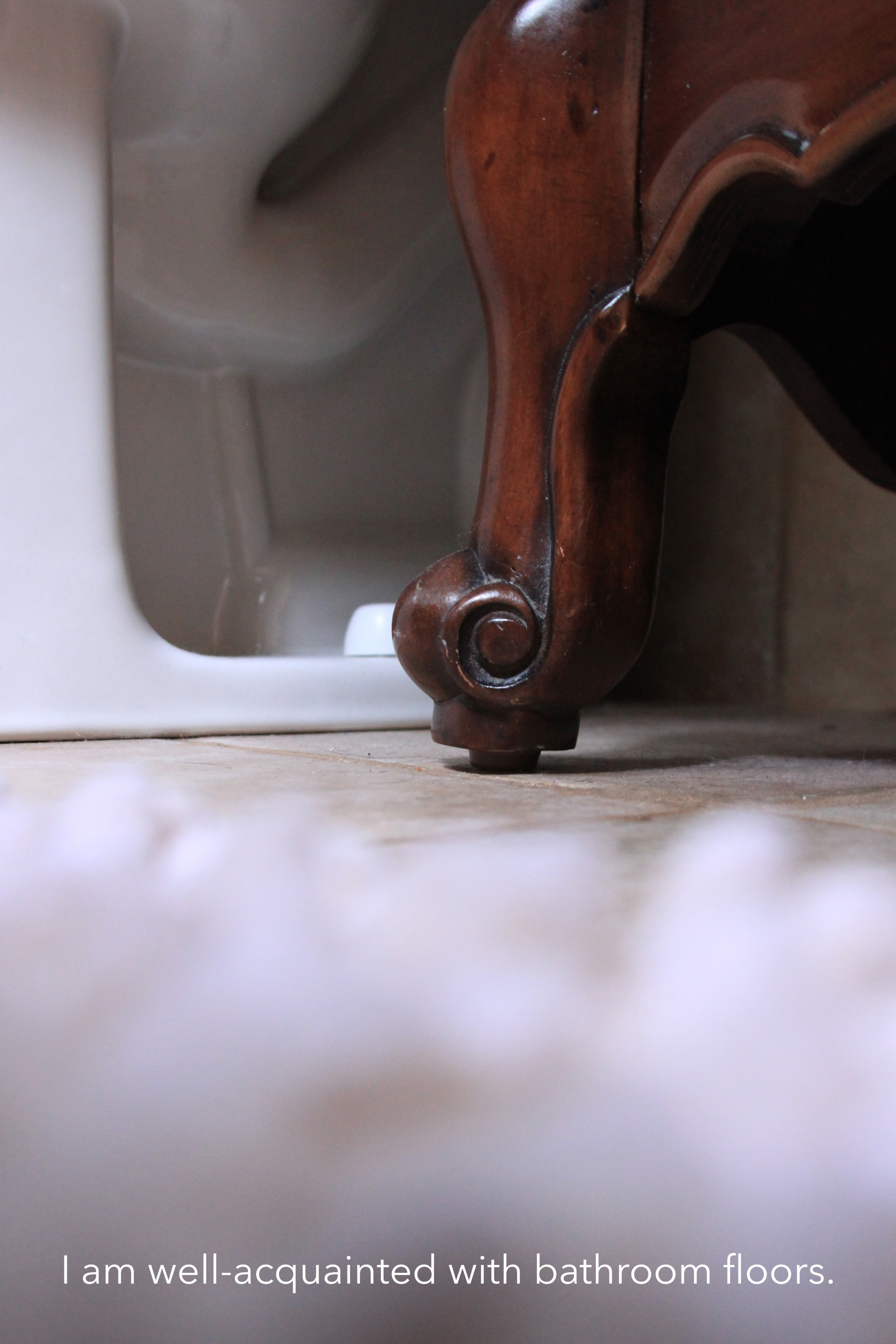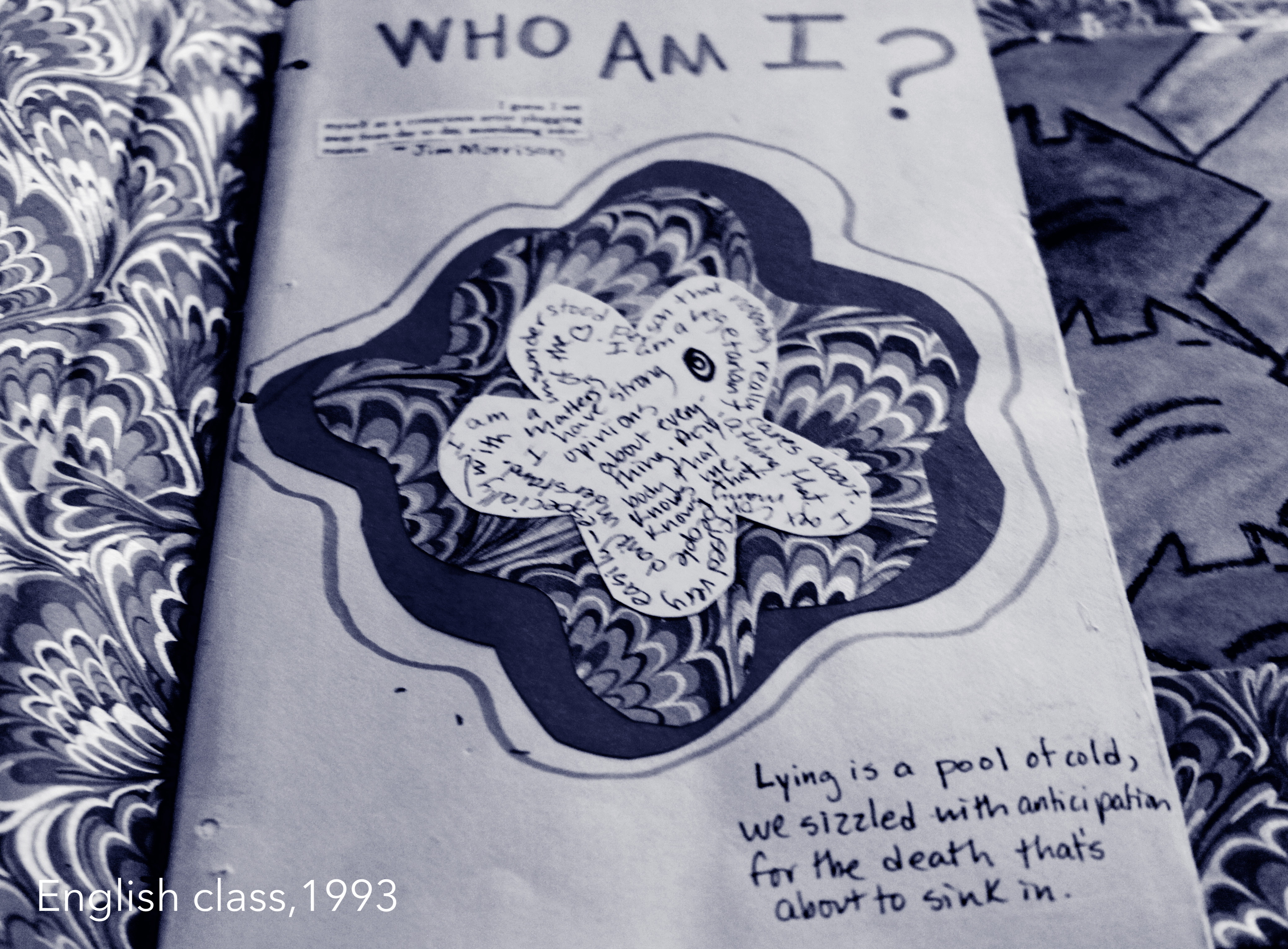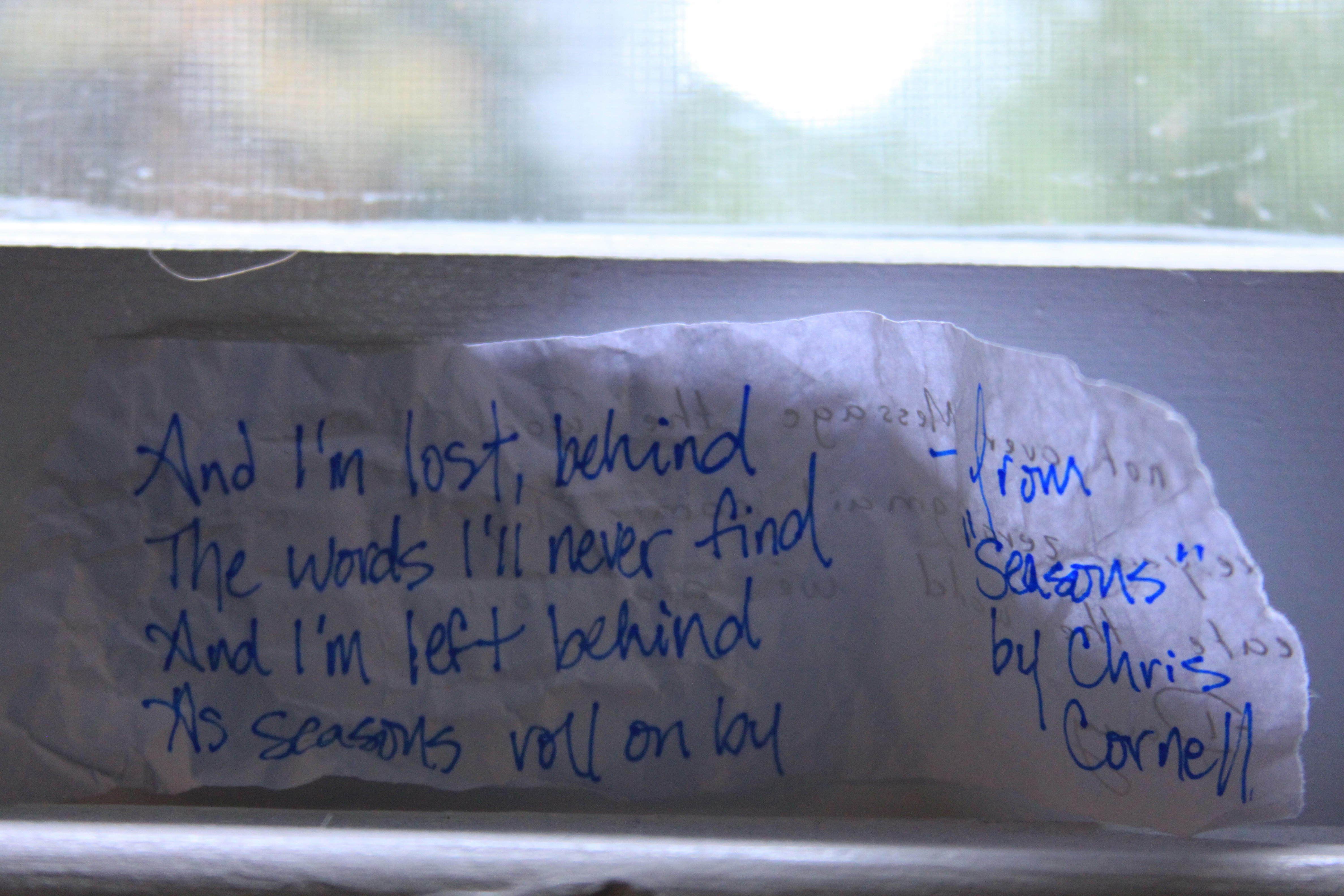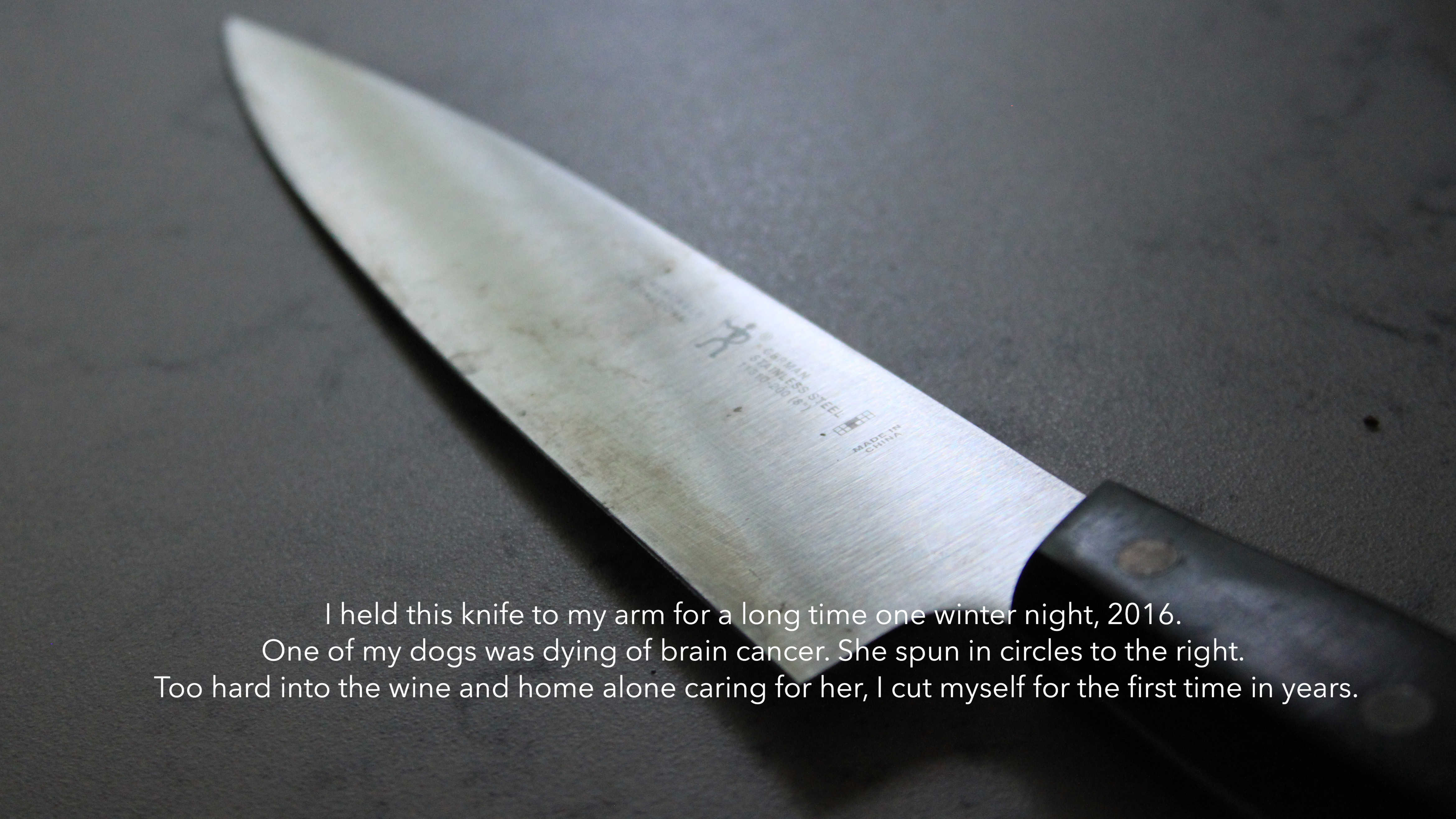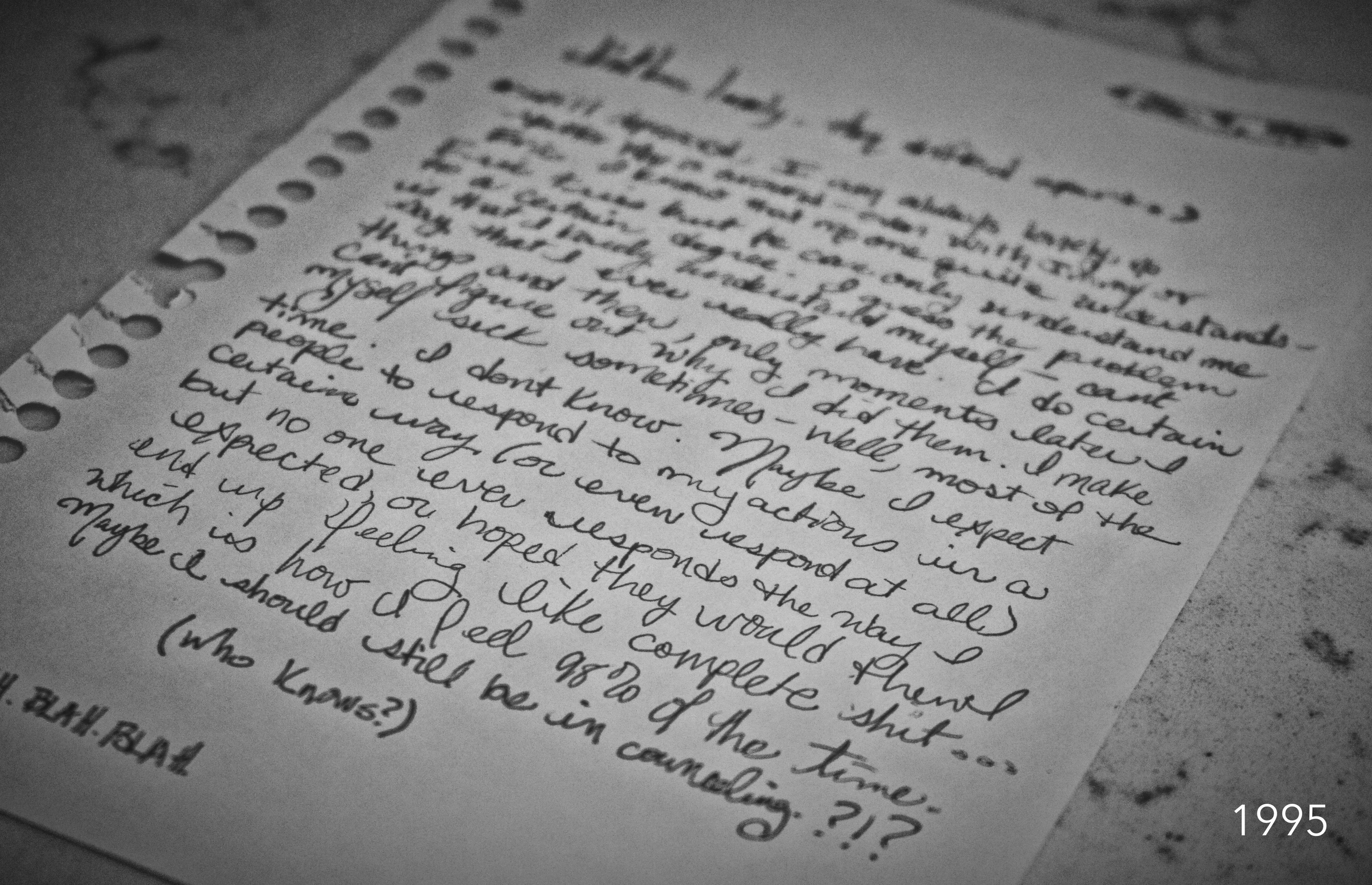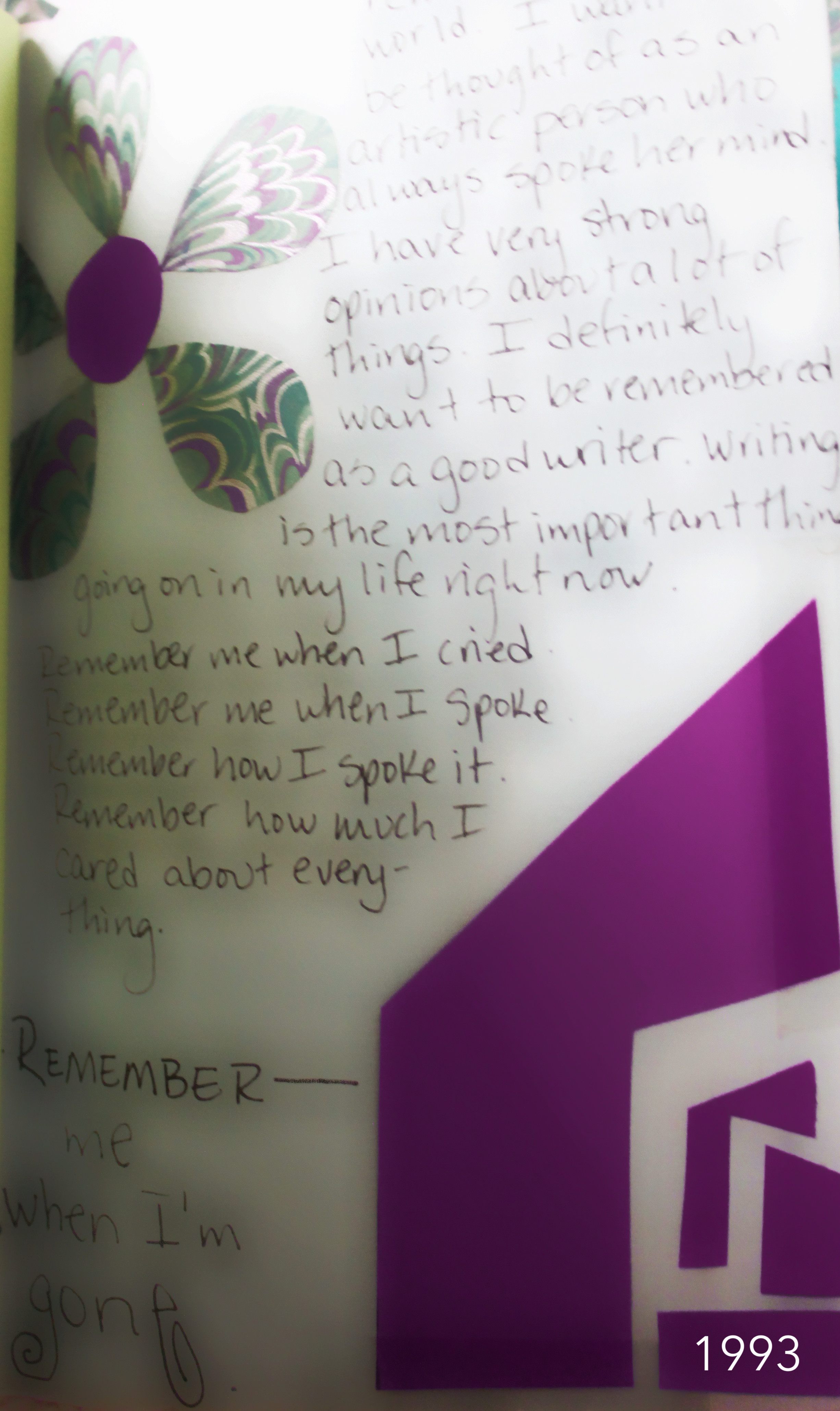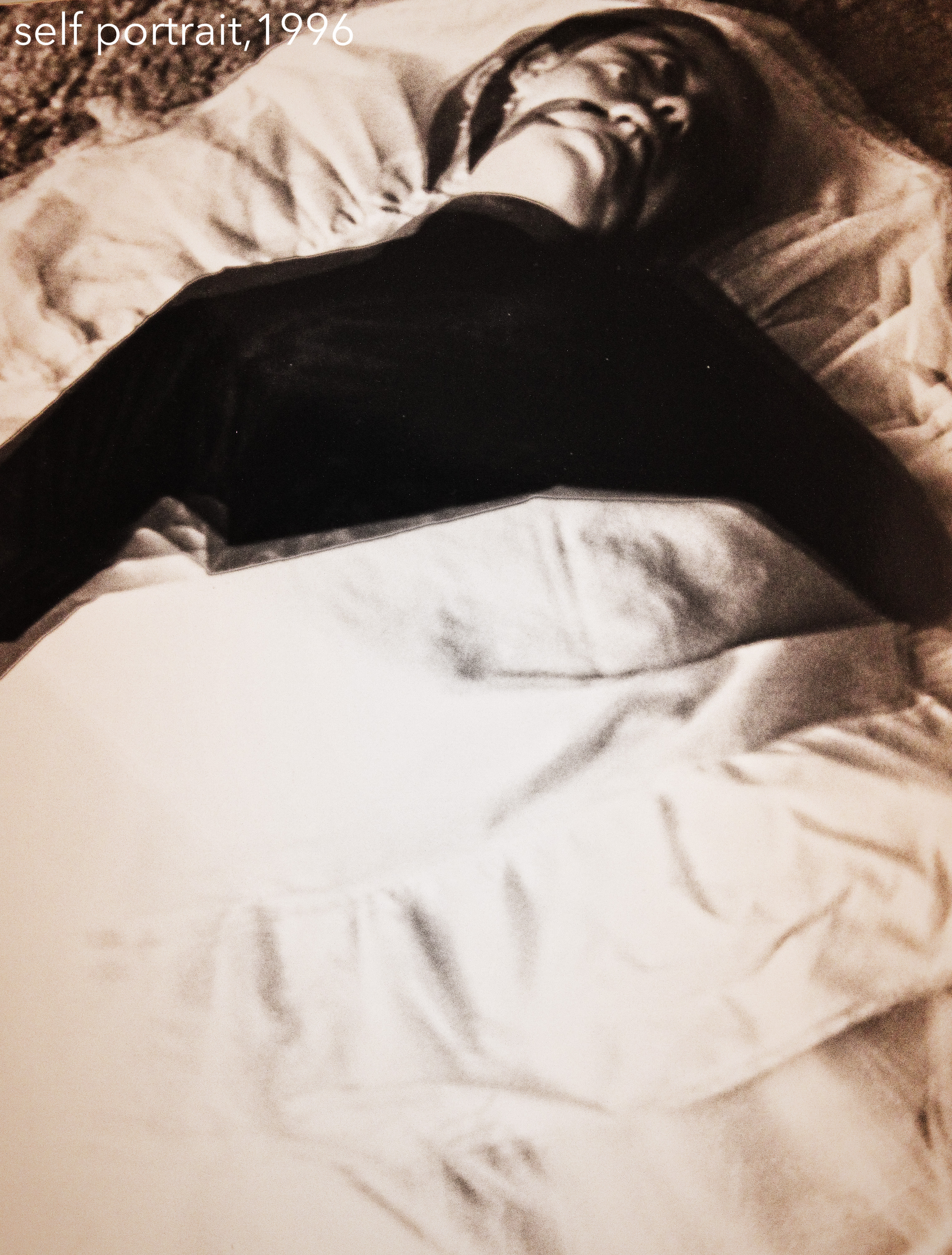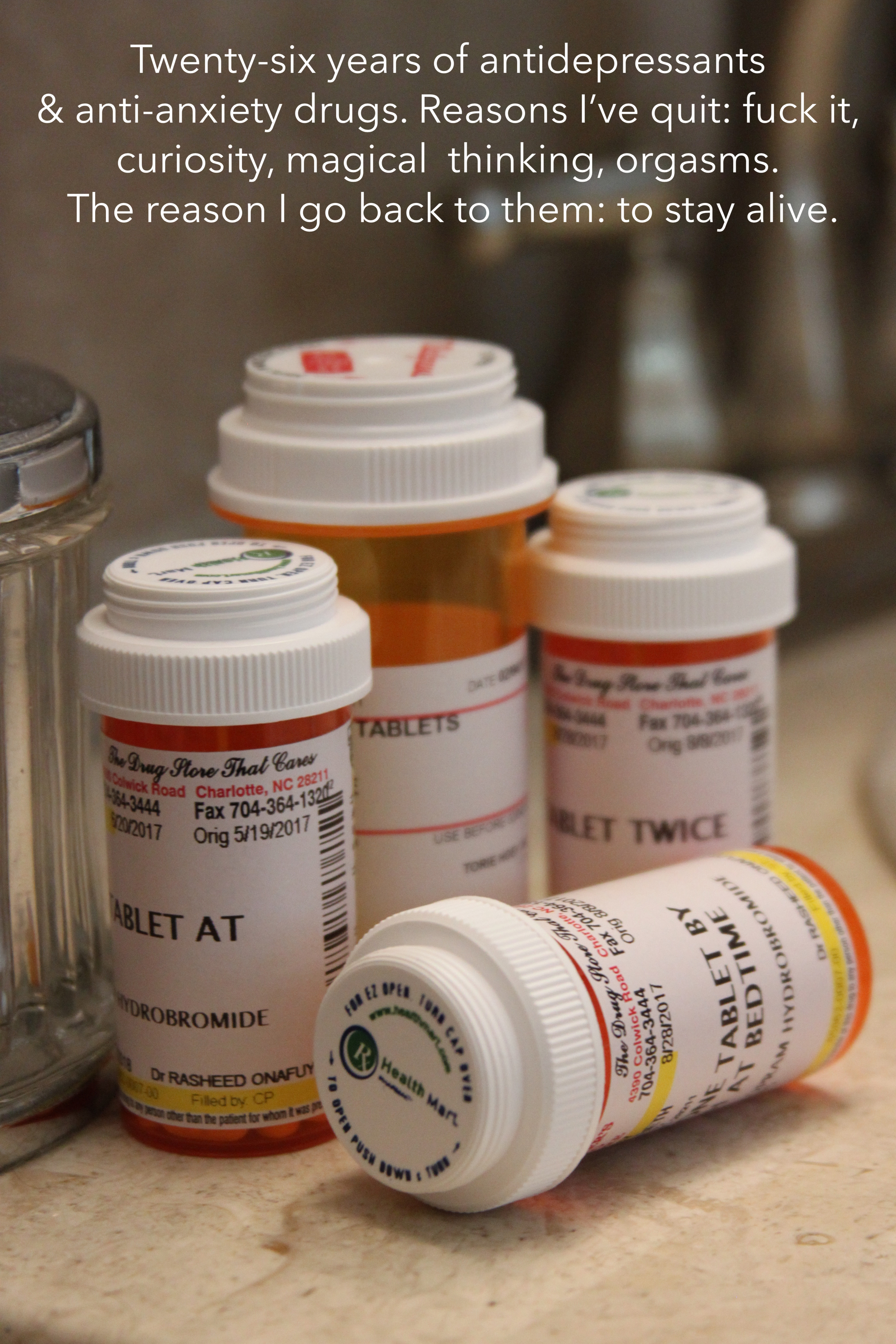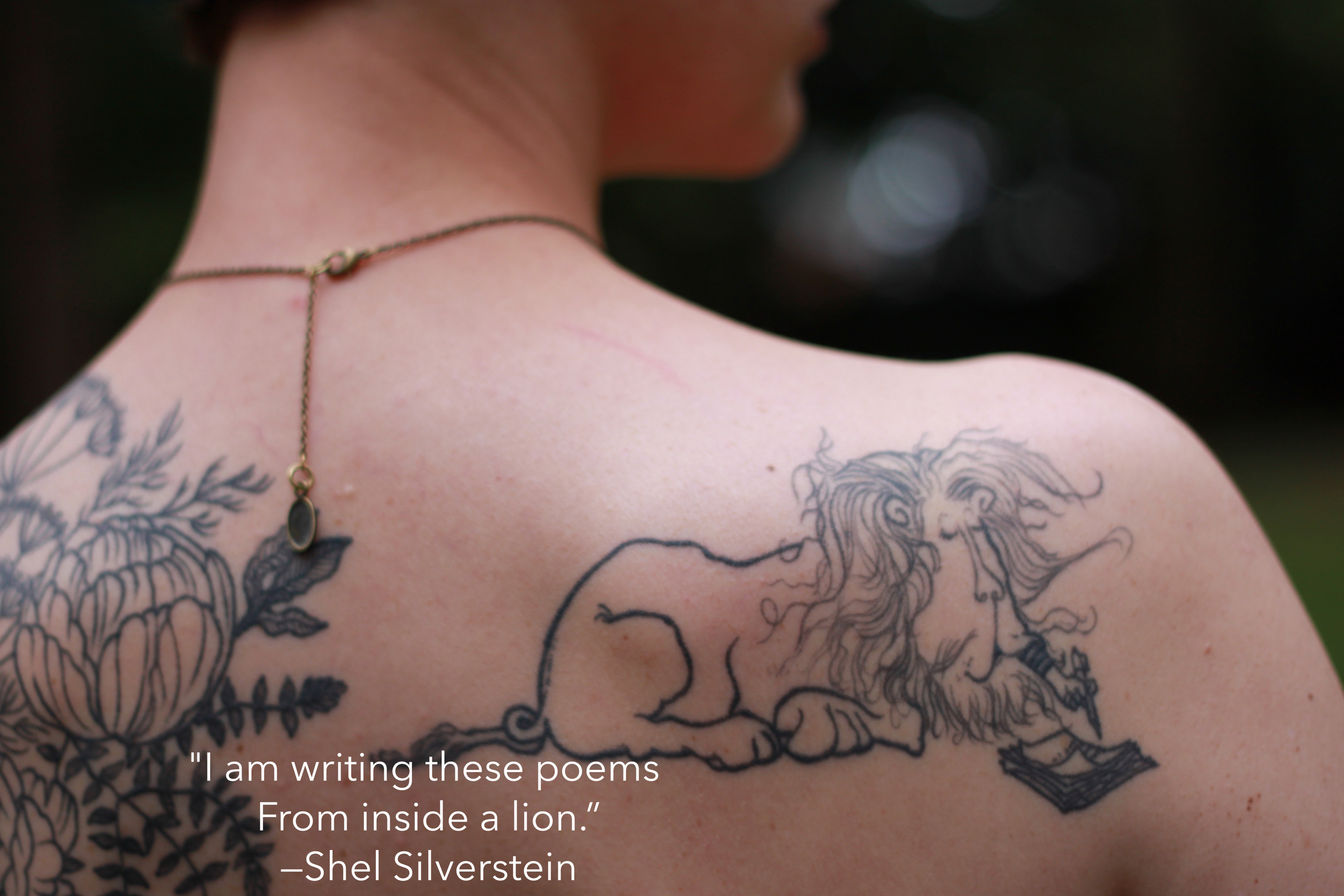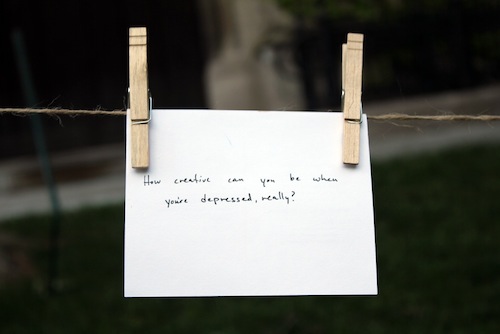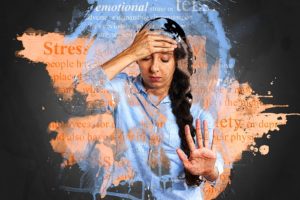
In 2015, the impossible happened: I was accepted to the Bread Loaf Writer’s Conference as a
contributor.
One of the poems I submitted in the manuscript for my application (a piece titled “Laws of Motion”) was about an incident of domestic gun violence my mother and I survived in 2001. It had taken place less than a week before my 19th birthday.
A series of northeast Vermont winter storms had dropped about three feet of snow on the ground in the preceding days and, when my mother and I snuck back onto the property the morning following our ordeal, we had to shovel frantically to get our possessions out of the house. We were racing against the clock before my mother’s ex-boyfriend could make bail; his family had money and it was only a matter of time before he’d be released. The next few weeks were strange. We had moved in with one of my mother’s friends and I had a long commute to and from school. My teachers were sympathetic to my situation, but I could tell my classmates were looking at me oddly. I wasn’t sure what they had heard, but in a town of less than 2,000 people, they surely knew something. I felt self-conscious about what I had just been through, as though I was the one who had something to explain. My lifelong best friend asked me if my bipolar mother wasn’t to blame for what had happened, and our attacker appeared to be spending much of his free time laughing with his buddies about the whole thing. Within a month and a half my mother and I left the state and moved to Illinois. I couldn’t wait to get out. I didn’t care if I ever returned. I hadn’t even been able to face the prospect of confronting our attacker in court; I was too afraid to be in the same room with him. Sadly, this meant that he won the case by default.
My fear wasn’t magically resolved with the simple traversing of state borders, either. For months afterward I holed myself up in my room… and then 9/11 happened. I didn’t feel safe in my home or in my country, and my anxiety level hit the stratosphere. My mother saw all of this, but instead of confronting me to try to talk sense into me—which she knew me well enough to know wouldn’t work—she took an indirect approach and introduced me to the daughter of one of her friends. I became comfortable enough with the girl to apply for a job at the same supermarket where she worked. Though I was still struggling to make emotional connections with others, I was at least able to leave my room on a regular basis.
No matter where I went from then on, it was difficult for me to feel at home. For the next several years I went only where my old friends were: I moved from Illinois to Pittsburgh, then briefly to Massachusetts. By the time I applied to Bread Loaf I was living in Connecticut. My mother had passed away in 2012 after a long, soul-sapping battle with breast cancer, and without any conscious decision on my part I had been exorcising my grief by writing a chapbook about us. It was, specifically, a book chronicling our overlapping experiences fighting mental illness, from my childhood through the time of her death.
I was experiencing something called “complicated grief,” according to my social worker, and I was having a difficult time mourning properly. I had begun to refer to the work in progress as my “box of grief,” and as I sat down to put my application together I thought hard about how to put into words why going to the writer’s conference meant so much to me, and why I believed it might help me establish a feeling of having come full circle.
In the end, it was simple- Vermont was where I was born. It was where the events in the book had taken place. It was where my mother was living, once again, when she lost her battle with cancer. That had been my last experience in Vermont: going to her to see her through the final stages of her disease.
I reflected on the first time I had thought I’d lost my mother: a winter night in March of 2001 when I had run down a snow-filled drive, gunshots ringing out behind me. In the house, where my mother still was.
“I want,” I wrote in my application, “to return by virtue of my own talent to a place which has come to symbolize nothing but fear and defeat.” I went on to say that if my writing could not earn a place for me at the conference, then I would keep pushing myself until it could. I was at work when I got the notice that I had been accepted. I whooped aloud and hugged my bewildered coworker, who had stepped out of his office to blink at me. I then sat back down to turn my attention to the documents attached to the acceptance letter. I found myself hesitating over an advisement to declare prescription medications. I had recently started Wellbutrin for my depression, and the idea of announcing that to perfect strangers made me feel ill-at-ease. (Eventually I would come to champion the use of antidepressants and to shun the idea that anyone should feel strange about taking them, but at the time I was still unable to be so kind to myself.) I was feeling better than I had in years, but I didn’t want to point out anything that might make me “different” in the eyes of the people who I so badly wanted to impress.
When you go to Bread Loaf, your first questions to anyone you meet are invariably about what you are there for (poetry, fiction, or nonfiction) and who you have as a workshop leader. What I wasn’t expecting was that over lunch I’d end up in conversation with the other writers about who among us was on medication. Almost everyone at my table was on something for depression or anxiety, or both. The attitude surrounding prescription medications was suddenly normalized, at least at that table, and I saw that I had been torturing myself for no reason. I finally had a moment where I felt at home.
Though I’ve long since made peace with my mental health issues, the rest of society is not so comfortable. We live in a culture of deflection, where people are conditioned to feel put at ease by the idea of the “odd one out.” This attitude is not always one born out of malice, at least not in the case of those who have nothing to gain from such a stance; much of the time it has to do with defaulting to learned helplessness. In the face of what overwhelms us we tend to fall back on the things we think we understand well (in the case of this blog post, those things are second amendment rights and/or the mentally ill as portrayed by popular culture).
We unfortunately have the opportunity to see this psychology demonstrated regularly. When Devin Kelley walked into a church in Sutherland Springs, Texas, and opened fire last November 5th, the number of mass shootings in the US in 2017 reached 307 (Gould). President Trump then asserted his opinion, one which arises almost every time gun violence is addressed in the media: “This isn’t a guns situation. This is a mental health problem at the highest level.”
A statement like that feels a bit like a shrug and a raise of the eyebrows; it isn’t the guns—it’s all those “crazy people” getting hold of the guns. So let’s restrict who gets hold of the guns, not the availability of the guns themselves. Right?
Yet many of those who worm their way into the national spotlight with these despicable acts (and, sadly, I have little doubt that by the time this blog post goes up we will have seen several more of them occur) have no record of receiving care for any mental health issue. Mass shootings perpetrated by “people with serious mental illness represent less than 1% of all yearly gun-related homicides” (Annas 81). Which means one of two things: either they never had a mental health issue to begin with, or they did but never sought help. Regardless, to lump them in with the mentally ill does everyone a disservice: it promotes ignorance, and it discourages those who are suffering from seeking help for fear of being further stigmatized.
The American Psychological Association has published research findings that indicate there are no “…predictable patterns linking criminal conduct and mental illness symptoms over time” (APA). The study was based on interviews performed with 143 different offenders with diagnoses of mental illness. But this is a scary idea, and it isn’t what most people want to hear. It isn’t comforting or convenient. Again, it’s that culture of deflection deal. I can understand the desire to think everything is so clear-cut, but most things aren’t. It’s time to do away with this harmful cycle of misinformation; that is the whole point. I also want to point out that nothing in this post is meant to imply that all artists are mentally ill, that mental illness helps creativity, or that no one mentally ill is harmful. I am not here to knock down one harmful generalization only to assert others; anyone can be anything and one trait does not preclude someone from possessing another, just as it does not guarantee that they will.
What I can say about my own traumatic experience is this: the man who grabbed a gun and
flipped the circuit breaker to corner my mother and I in a dark house was not mentally ill. He was
an angry man who wanted to dominate everything around him and who couldn’t bear it when he
thought his hold was slipping. Until I became aware of that fact, I trusted him. I overheard him
refer to me as his daughter once when he thought I was out of earshot, and at the time I
assumed it was a sign of affection. Now I believe it was proprietary—merely an extension of that
need to control.
My high school friend’s reaction was to wonder what my mother and I had done to provoke
someone’s anger to the point where they would draw a gun on us. That was back in 2001,
before we were being confronted regularly by reports of inexplicable gun violence in this
country, but despite the passage of time I feel that it’s still quite easy to see how others would
want to believe that we had done something to drive this man to his act. Or, alternately, to
believe that he must be mentally ill. What other options could there be? Surely he couldn’t just
be a violent, dangerous man for no obvious reason: he had friends. He seemed normal in
public.
This is still the prevailing attitude. It makes people feel safe to believe there is some easy way to
identify dangerous individuals and situations: that there will always be some blatant warning
sign to watch for. If that was so, we could be on our way to formulating proper preventative
responses right this very moment. Mental illness is a hot-button subject that is far more tangible
than the concept of a violent person who can act like anyone else in his or her day-to-day
dealings. But mental illness being so tangible has not yet played any role in a solution to the
problem, and that is because it is not the answer.
My Facebook feed is a daily example of mental wellness. It is an onslaught of brilliantly expressed sadness and anger, intelligent debate, and creative expression. Many of these discussions are taking place between those same people I met at Bread Loaf: people who have struggled against both circumstance and biology and emerged stronger, with or without pharmacological help. They are outraged by the backwards movement of our country—or, rather, the atmosphere of validation which has been cultivated for small, hateful minds, therefore raising the volume on those voices and giving them an unpardonable degree of power. In this atmosphere it isn’t just the debate on gun control that suffers, but also issues of race, politics, feminism, sexuality, and disability rights. All of these subjects labor along without progress, stifled. Creativity moves the air in the room, and that knowledge drives my artist friends to set aside whatever internal issues they are facing- if any- and protest.
There is no telling, at this rate, when real discussions on what can be done to better this country and its policies will begin. The one thing we can be certain of is that we cannot start having the right conversations until we stop having the wrong ones, and those would include the ones we’ve been having over and over again without any fresh result.
If we want to know where to start to get these conversations pointed toward true north, I would suggest that there are plenty of insightful writers and artists we could listen to. I know some fine ones to begin with; I met them at a lunch table in the summer of 2015. They come to us with fresh, creative perspectives, empathy their greatest tool.
True empathy is a powerful thing when we live in world of “you vs. me” where the almighty dollar can be counted on to have the last word. To imagine things being any other way feels quite utopian, I’ll grant you that; but if something’s got to give, I think that we as a majority can agree that we would rather it not be the world from underneath our children’s feet.
Where we are standing right now is simply not sustainable.
